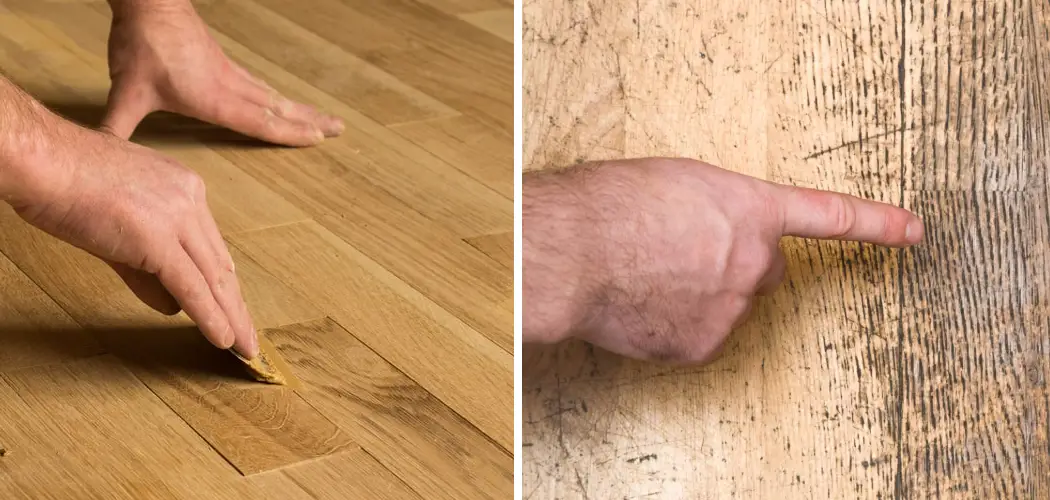Are you having trouble trying to figure out how to fix dents in wood floor? If so, look no further. Nowadays, there are a variety of methods that can help restore the original appearance and condition of your wood floors without expensive and time-consuming sanding.
In this blog post, we will teach you step-by-step how to repair these dents in your wooden floor without needing any special tools or materials. So keep reading if you’re interested in learning more about how to easily fix those pesky dents!
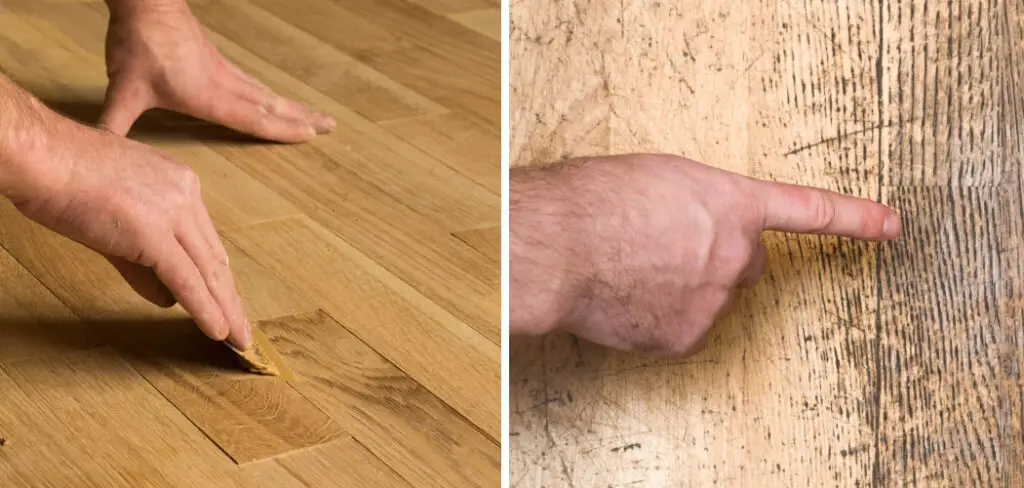
Many people are faced with this common problem, and it can be both time-consuming and costly to hire a professional. Fortunately, there is a cost-effective solution that will not only help save money but also achieve great results.
In this blog post, we’ll cover how to effectively repair dents in your wood flooring by tackling them at home without needing any special tools or equipment. Read on to learn about different methods of repairing dents, tips for success, and easy steps for an effective outcome.
What Causes Dents in Wood Floor?
1. Furniture
One of the most common causes of dents in wood floors is furniture. It can be difficult to move heavy pieces of furniture without causing a dent or two. Be sure to use felt pads, area rugs, or other protective elements when moving them around your home to avoid costly damage.
2. Accidental Drop Items
Accidentally dropping items on the wood floor can also cause dents. Be sure to clean up any spills quickly and take extra care when moving around the house, especially while carrying heavier items that can easily cause a dent if dropped.
3. Humidity
Changes in humidity can also cause wood floors to expand or contract resulting in dents or warps. Pay close attention to your local climate and make sure you are doing everything you can to keep your floors at a consistent temperature and humidity level.
4. Foot Traffic
Dents can also form due to foot traffic in high-traffic areas of your home such as entryways and hallways. To prevent dents, use area rugs or smaller carpets that are specifically designed to protect wood floors.
5. Pets
Finally, pets can also cause dents in wood floors with their nails or claws scratching the surface of the wood. Be sure to keep your pet’s nails trimmed and if necessary, provide them with a comfortable rug or carpet for them to lay on while inside the house.
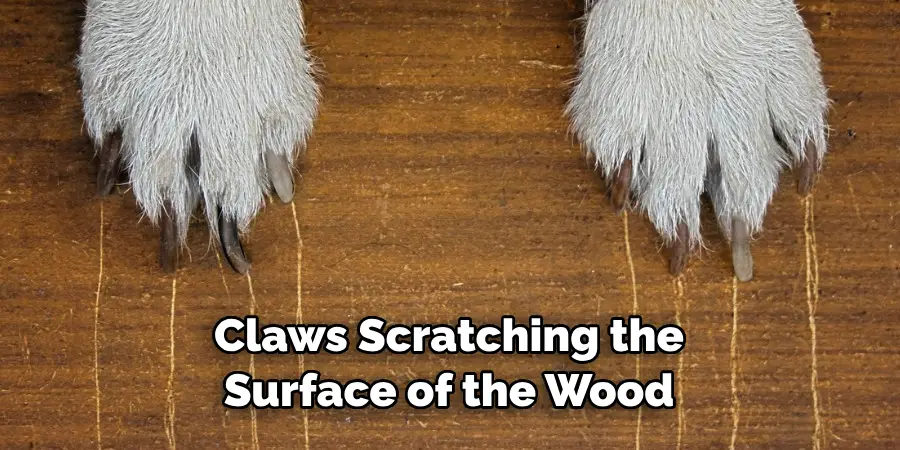
Why is It Important to Fix Dents in Wood Floor?
1. To Make the Floor Long Lasting
One of the most important reasons to repair dents in wood floors is to make sure that the floor remains in great condition and lasts for a long time. Dents can be very damaging to a hardwood floor if not resolved quickly, which could result in having to replace your entire flooring system sooner than expected.
2. To Save Money
Dent repairs are usually much cheaper than having to replace your entire wood floor. So it’s important to address the damage as soon as you find it in order to minimize the cost of repairs and extend the lifespan of your flooring system.
3. To Preserve Aesthetic Appeal
Dents can be unsightly, especially if they are deep or large enough that they don’t blend with the rest of the flooring. Repairing dents in wood floors will help preserve their appearance and keep them looking great for years to come.
4. To Improve Home Value
By keeping your wood floors in pristine condition, you can increase the value of your home should you decide to sell in the future. Wood floor repairs are an important part of maintaining a house’s aesthetic appeal and increasing its worth.
In conclusion, it is important to repair dents in wood floors for a number of reasons, including extending the life of the flooring system, saving money on repairs, preserving aesthetic appeal, and improving home value. When these dents occur, take action quickly to address them as soon as possible and keep your wood floors looking great for years to come.
10 Ways on How to Fix Dents in Wood Floor
1. Filling
The first step in fixing dents in wood floors is to fill them with wood putty or epoxy. Make sure the material you use matches the wood that your floor is made of. Use a putty knife to fill the dent and then sand it down until it is flush with the floor.
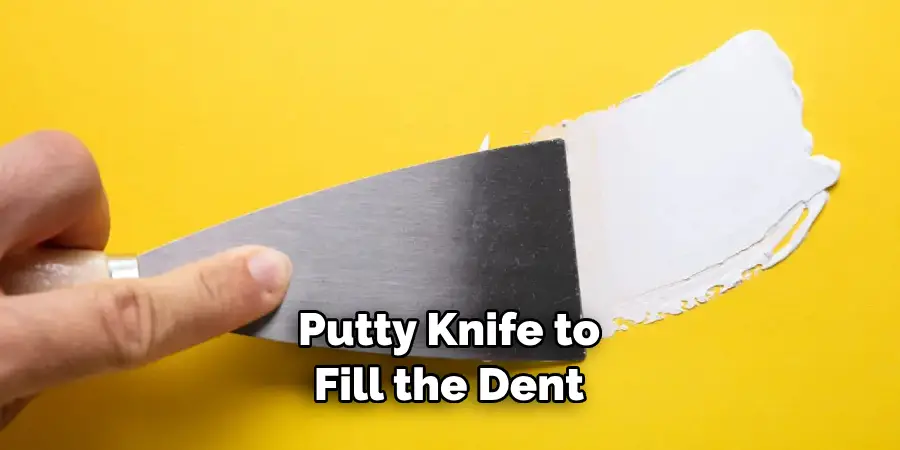
2. Heating
Using a hair dryer or steam iron, you can use heat to help raise the wood fibers back up. The key is to use gentle, even heat and not too much pressure as this could end up damaging the floor further. Also, make sure the heat is not too hot or it could cause permanent damage.
3. Cold Compress
Using a cold compress, such as an ice cube or cold spoon, can help contract the wood fibers and raise them back up to their original position. Place the compress directly on top of the dent for 10-15 minutes at a time and repeat until you have achieved the desired results.
4. Ironing
You can also use a clothing iron to help fix dents in wood floors. Place a cloth over the dent and gently press the hot iron over it for 10-15 seconds at a time. Make sure not to leave the iron on for too long or you could cause more damage than good.
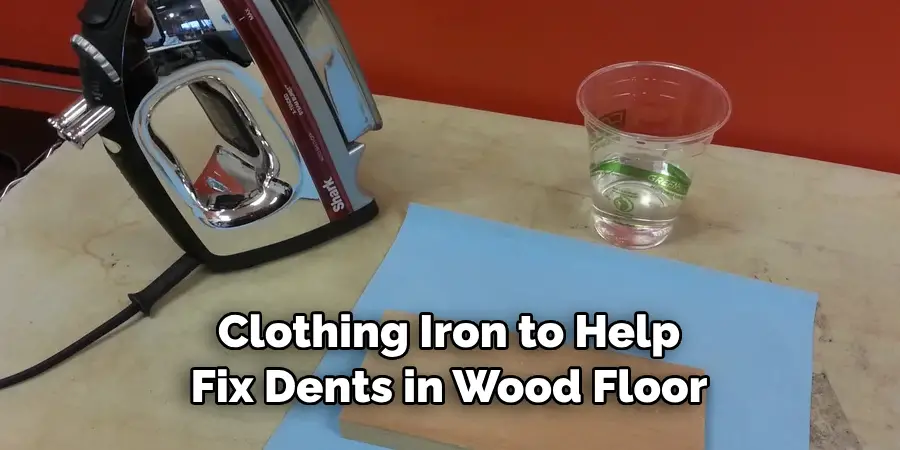
5. Toothbrush
Using an old toothbrush, apply a little wood glue into the dent. Gently brush in a circular motion until you have filled the dent with glue. Allow it to dry and then sand down the area until it is flush with the floor.
6. Sanding
In some cases, you may need to use sandpaper to fix dents in wood floors. Use fine-grit sandpaper and be sure to move in only one direction. If done correctly, this should help remove the dent from the floor.
7. Re-staining
If all else fails, you may need to re-stain the area of the wood floor that has been dented. Make sure you use a stain that is matched the existing color of your wood floor and then apply it as instructed.
8. Vacuuming
Vacuuming the area of the dent can help loosen any dirt or debris that has accumulated in the crevices and make it easier to fix. Make sure you use a vacuum attachment when cleaning around hard-to-reach spots such as corners or along baseboards.

9. Weight
In some cases, simply placing a heavy object on top of the dent can help to flatten it out. You may need to experiment with different weights until you find one that works best for your floor.
10. Professional Repair
As a last resort, if all else fails, you may need to call in a professional to repair your wood floors. A professional can help you determine the best way to fix the dents without causing any further damage. They will also be able to recommend products that can help protect your floors from future damage.
By following these 10 steps, you should be able to successfully fix dents in the wood floor and restore it back to its original beauty. Be sure to take extra care when moving heavy furniture and other items, as this can cause more damage than good.
Also remember to keep your humidity levels consistent and clean up any spills or messes quickly to help prevent further damage. With the right care, you can protect your investment and enjoy beautiful wood floors for years to come.
Frequently Asked Questions
What Precautions Should I Take Before Fixing a Dent in My Wood Floor?
Before attempting to fix a dent in your wood floor, it is important to ensure that the area of affected wood is clear of dirt and debris. This will help to prevent any further damage being caused by dust or particles getting trapped under the repair material. It is also important to make sure that the surrounding area is well-ventilated, as the products used to repair a dent in wood flooring can be flammable or contain toxic substances.
What Materials Do I Need To Fix a Dent in My Wood Floor?
The materials you will need to fix a dent in your wood floor will depend on the severity of the damage and what type of wood it is made from. Generally, most simple dents can be fixed with a wood filler or putty knife.
If the damage is more extensive, you may need to use tools such as a belt sander or router to sand down the affected area before applying a wood filler. Once the wood filler has been applied and allowed to dry, you will then need to sand it down again until it is flush with the surrounding area. Finally, you will need to apply a coat of wood sealant or finish in order to protect the repaired area from future damage.
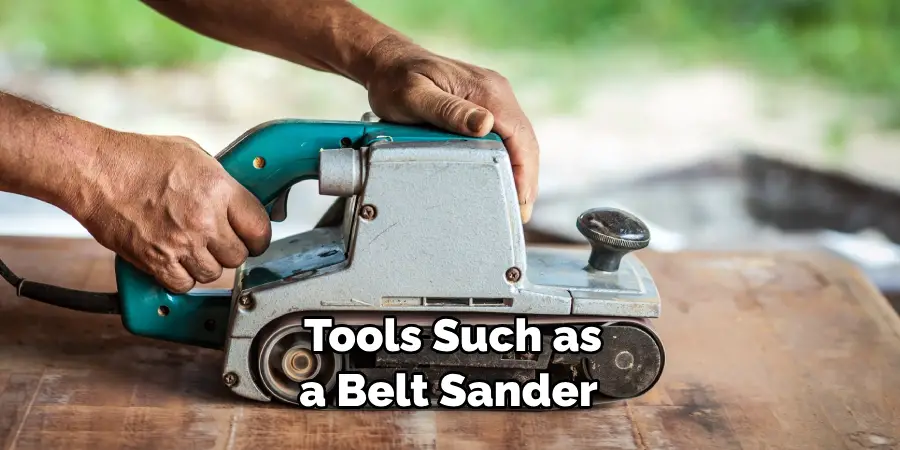
What Are Some Tips For Fixing Dents in Wood Floor?
Make sure that the area is clear of dirt and debris before beginning any wood repair work. Ensure that the surrounding area is well-ventilated. Choose a wood filler that matches the color of your flooring as closely as possible. Use a belt sander or router to sand down the affected area before applying any wood filler.
Allow plenty of time for the wood filler to dry before sanding it down and applying a sealant or finish. Apply several coats of sealant or finish in order to protect the repaired area from future damage. Regularly clean and maintain your wood floor in order to prevent further dents or damage.
How Much Does It Cost To Fix a Dent in My Wood Floor?
The cost of fixing a dent in your wood floor will depend on the severity of the damage, the type of wood involved, and what materials you use to repair it. Generally speaking, simple dents can usually be fixed using readily available products that are relatively inexpensive.
More extensive damage may require specialist tools or materials which could potentially increase the cost of repair. In any case, it is best to consult a professional flooring installer or refinisher for an accurate quote before beginning any repairs.
Can I Fix a Dent in My Wood Floor By Myself?
In general, it is possible to fix a dent in your wood floor by yourself. However, it is important to note that the process can be tedious and time-consuming, as you may need to sand down the affected area before applying any wood filler.
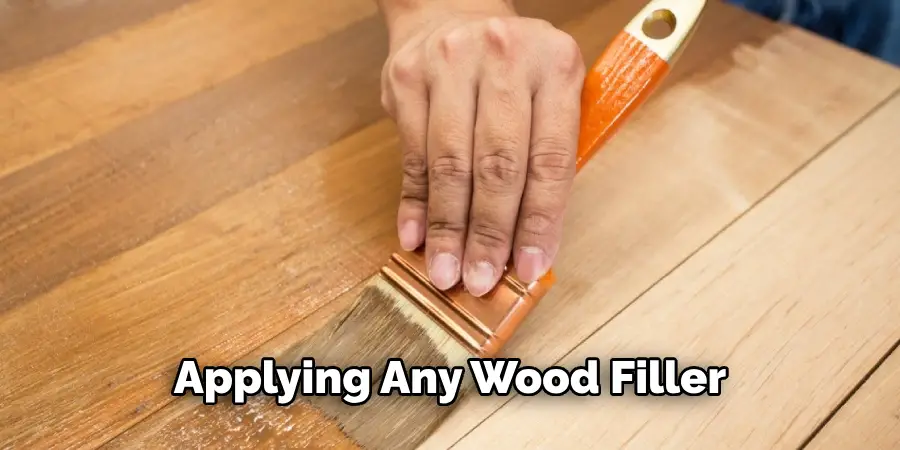
Additionally, if the damage is extensive or requires specialist materials or tools, it is best to consult a professional in order to ensure that the repair job is done correctly.
Ultimately, when deciding whether or not to repair a dent in your wood floor yourself, you should bear in mind your own skill level and experience with DIY projects. If you are unsure of how to go about the task, it is probably best to seek advice from a professional.
Conclusion
Learning how to fix dents in wood floor is a great skill to have and can save you a lot of money that would be spent calling in a professional. It is important to use the right type of tools, fillers and finishes for successful dent removal.
Repairing dents from pets or furniture may seem like an overwhelming task, but with the right steps, it can be made easier. Taking proper care of your wooden floors should always be at the forefront of your mind because they are one of the most vital elements to keep your home looking its best.
Remember, following the necessary precautions and exercising patience before taking on more difficult tasks can result in success. Don’t be afraid to tackle small tasks like repairing dents in your wood floor – it will give you satisfaction knowing that you repaired them yourself!
Rick is a handyman who grew up helping his dad with his business. He learned a lot from him about how to fix things, and also about how to work hard and take care of business. These days, Rick is still into fixing things- only now, he’s doing it for a living.
Rick is always looking for new ways to help people grow and develop. That’s why he started contributing to this blog: to share all his experience and knowledge so that he can help people who are interested in DIY repair.

